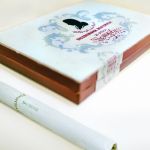
27 July – 30 August
In the late 1940s, the process of normalization in the city and the countryside was becoming clearly perceptible, also in the Salzburg Festival. In February for instance, the temporary power cuts ceased and for the first time nearly all stage scenery could be made in the Festival workshops in Salzburg, saving costly and complex transportation.
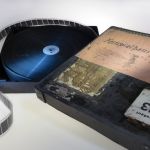
28 July – 31 August
Film footage (151 feet in fact) documents ‘Austria’s greatest artistic event’ in 1948 in word and image: Helene Thimig rehearsing Jedermann/Everyman, Paula Wessely and Horst Caspar in Grillparzer’s Des Meeres und der Liebe Wellen/The Waves of Sea and Love, also the summit meeting of the two maestri and artistic rivals: Wilhelm Furtwängler, who conducted a new Fidelio at the Festival Hall, and Herbert von Karajan in his opera début.
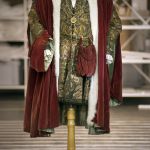
27 July – 31 August
The 1947 Salzburg Festival opened with Jedermann, with stage direction by Reinhardt’s widow Helene Thimig. Jedermann was played by Attila Hörbiger. Thimig’s production after Max Reinhardt remained in the repertoire until 1951.
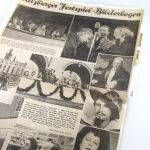
1 – 31 August
The former director of the Theater in der Josefstadt Ernst Lothar played a major role as Theater & Music Officer of the Information Service Branch in arranging the Salzburg Festival schedule, also in reviewing the participants.
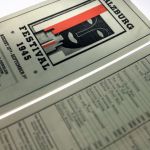
12 August – 1 September
On 4 May – four days before the end of the war – American troops took over command in Salzburg. The decision to revive the Festival was already made in spring.
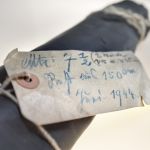
The “Salzburger Theater- and Musicsummer” is cancelled
Despite the catastrophic situation, preparations were being made for a Salzburg Theatre and Music Summer, which also included the world première of Die Liebe der Danae by Richard Strauss. However, this was cancelled after the attempted assassination of Hitler (20 July 1944) and the decree declaring ‘total war’.
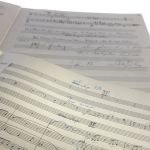
Salzburger Theater- and Musicsummer 4 – 29 August
In summer 1942, Richard Strauss guested in Salzburg for the first time since 1933 and conducted the Vienna Philharmonic Orchestra in a programme of works by Mozart. He also agreed in late August 1942 to première his opera Die Liebe der Danae/The Love of Danae at the 1944 Salzburg Festival.
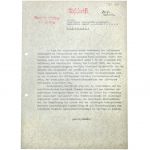
5 – 30 August
The organizational structure of the Festival as conceived by the founders was annulled with the liquidation of the Salzburg Festival Theatre Association. Clemens Krauss, already named Artistic Director of the Festival in September 1941, was installed as General Artistic Director (Generalintendant) with a ten-year contract.
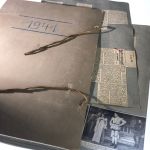
2 – 24 August
Daily newspapers reported that the Festival was scheduled to take place in Salzburg that summer, although the war was escalating and the Wehrmacht was attacking the Soviet Union.
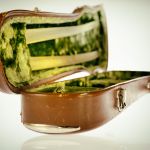
Salzburger Kultursommer 13 – 27 July
Only a torso of a programme could be presented in the war year 1940. The season lasted a mere fortnight in July, and consisted entirely of a concert cycle by the Vienna Philharmonic Orchestra.
1940s
After the war broke out, the Festival programme was considerably reduced; in 1940, only a torso remained with a concert cycle given by the Vienna Philharmonic Orchestra. On 1 April 1942, the Salzburg Festival Theatre Association was liquidated and Clemens Krauss entrusted with the office of General Artistic Director (Generalintendant). The performances were now mainly attended by soldiers either on furlough or wounded, and workers from ammunition factories.
In 1943, the propaganda ministry forbade the title ‘Festspiele’ (Festival) and introduced instead the ‘Salzburg Theatre and Music Summer’. After the failed bomb attack on Hitler on 20 July 1944 and the subsequent decree of waging ‘total war’, propaganda minister Goebbels ordered all festivals in the German Reich to be cancelled. In Salzburg in 1944, performances included only one orchestra concert and the dress rehearsal of Richard Strauss’s latest opera Die Liebe der Danae/The Love of Danae. Among the artists who kept the Festival going under the shadow of the swastika were Clemens Krauss, and also his fellow conductors Karl Böhm and Hans Knappertsbusch.
After the war, there were immediate endeavours to revive the Festival. The impulse was given by the American Army of Occupation. Only three months after the end of the war, a Festival was held once more in summer 1945. Similar to the turn of the times of 1918/20, in 1945, too, a pivotal role was played by harking back to the ideas of the founding fathers of bonding nations together and of committing to a new Austrian identity for Salzburg. But the leading artists of that time had been exiled or had perished. The conductors engaged were Hans Swarowsky, Felix Prohaska, John Barbirolli, Charles Munch and Carl Schuricht – for after the denazification processes, artists such as Wilhelm Furtwängler, Karl Böhm, Clemens Krauss and Herbert von Karajan were prohibited from performing until 1947/48.
In 1946, Hofmannsthal’s Jedermann/Everyman made a comeback, and also the Vienna Philharmonic Orchestra. Likewise in 1946, Oscar Fritz Schuh was engaged for the first time as stage director; he set contemporary accents in the repertoire of the following years. In 1948, Gottfried von Einem became a member of the Festival’s Board of Directors and Ernst Lothar head of straight drama. And finally a man stepped into the limelight whose name for many is inseparably linked to the Salzburg Festival: Herbert von Karajan, who in 1948 directed an opera production at the Festival for the first time, Gluck’s Orpheus and Eurydice.
Besides the caesuras analogous to the upheavals of the time, the new start of the Salzburg Festival manifests many continuities in personnel and contents.
